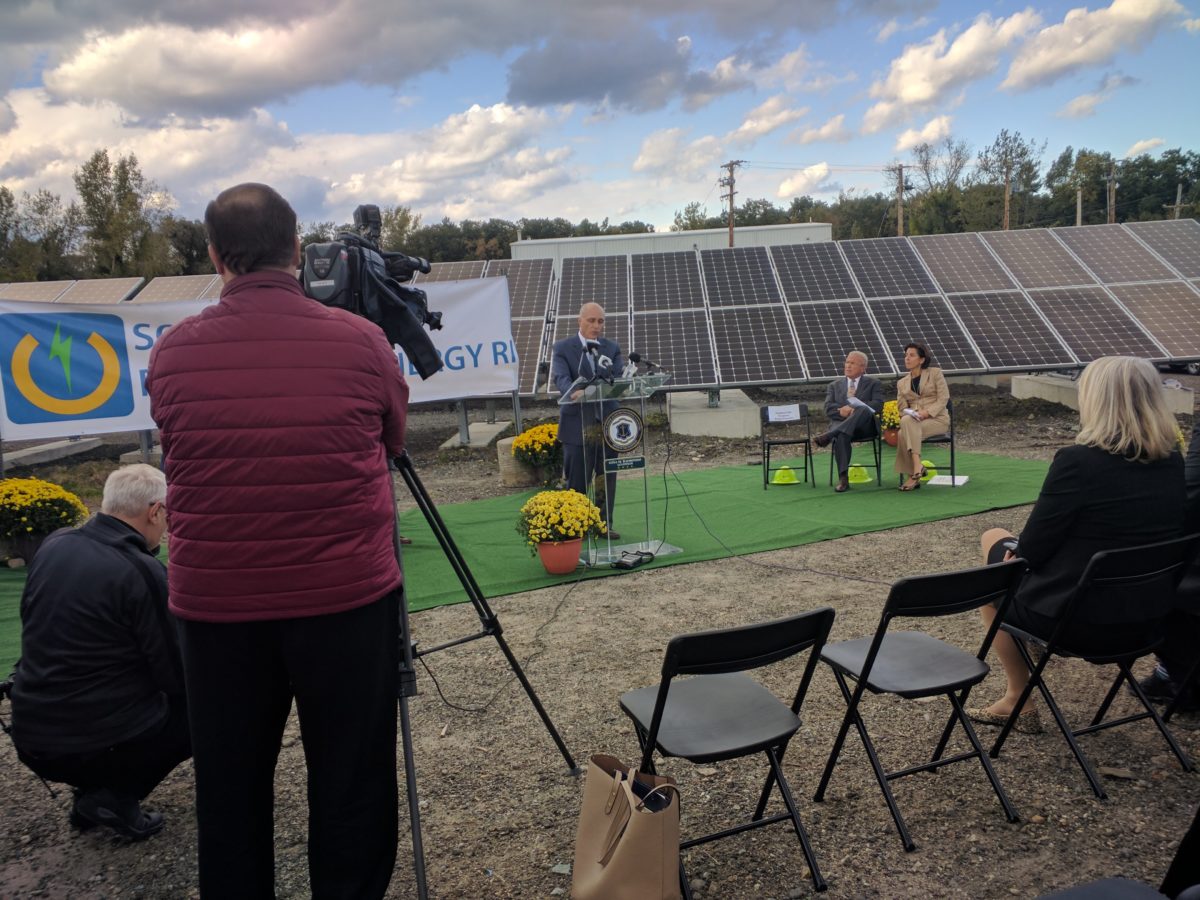Rhode Island Governor Gina Raimondo’s goal of 1 GW of renewables by the end of 2020 has taken a 400 MW step. The state’s 400 MW Request for Proposals (RFP) (.pdf, 27 pages), administered by its sole electric utility – National Grid – received a total of 41 project bids from eleven unique developers. The projects were cumulatively 2.5 GW of capacity, which far outpaces the state’s demands, but does give some insight into the potential available if the state were to grow past its current 1 GW ambitions.
With the acceptance of these bids, we’re now going to wait until spring to get further answers per the official timeline:
| Conditional Selection of Bidders for Negotiation | May 2, 2019 |
|---|---|
| Negotiate and Execute Contracts | July 29, 2019 |
| Submit Contracts for PUC Approval | August 30, 2019 |
The RFP required that projects be between 20 MW-AC and 200 MW-AC. The wind projects were all massive, and all offshore – ranging from 100 MW through 350 MW.
The solar power projects ranged rom 20 MW through 170 MW, and not all of them were located within the state of Rhode Island. The EDF Renewables Morris Ridge Solar Energy Center (New York filing – 101 page .pdf) appears to be located in the western portion of Upstate New York – about a six hour drive from Rhode Island.

For most projects, the majority of the interesting data was blocked out. However, the Cypress Creek Renewables 20 MW-AC MacDill Solar Facility (.zip file download) offered some decent insight. The project, to be owned by Cypress Creek, proposed a 15-year power purchase agreement.
The facility is located on a 177 acre parcel of land in Western Massachusetts and will tie into a 115 kV transmission line that onsite. The 25.6% capacity factor facility is projected to be ready to deliver electricity on December 31, 2020.

The 20 MW-AC solar will be coupled with a 20 MW / 40 MWh battery storage system. Cypress Creek notes that it sees this battery as having greater value than a standard solar facility:
By pairing solar with BESS, the generation profile shifts from 24.5% of production during Peak Hours to 33.6%, contingent upon the ultimate obligations relevant to our BESS under Forward Capacity Market rules for Day Ahead Market participation and dispatch for Capacity Scarcity Conditions.
According to the Rhode Island Office of Energy Resources, the state currently has 304 MW of renewable energy deployed, with the majority of it coming from solar and onshore wind power. These bids add to the state’s growing middle sized solar power market – with developers like Conti Solar building portfolios of projects totalling 35 MW, and Southern Sky Renewables partnering with finance groups like Captona Partners to put solar on top of landfills in North Providence.
And the building of large solar projects in other states is a deft way to dodge a Not In My Backyard (NIMBY) movement that has grown in opposition to large-scale solar and wind projects in the densely populated state. This was prominently seen when a judge recently defined solar power production as “manufacturing” in order to block a project near Newport.
This content is protected by copyright and may not be reused. If you want to cooperate with us and would like to reuse some of our content, please contact: editors@pv-magazine.com.








By submitting this form you agree to pv magazine using your data for the purposes of publishing your comment.
Your personal data will only be disclosed or otherwise transmitted to third parties for the purposes of spam filtering or if this is necessary for technical maintenance of the website. Any other transfer to third parties will not take place unless this is justified on the basis of applicable data protection regulations or if pv magazine is legally obliged to do so.
You may revoke this consent at any time with effect for the future, in which case your personal data will be deleted immediately. Otherwise, your data will be deleted if pv magazine has processed your request or the purpose of data storage is fulfilled.
Further information on data privacy can be found in our Data Protection Policy.